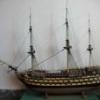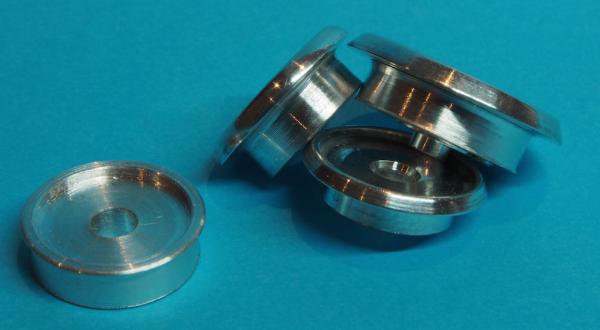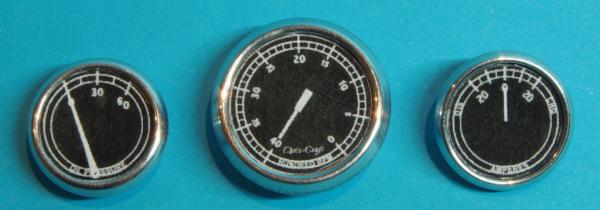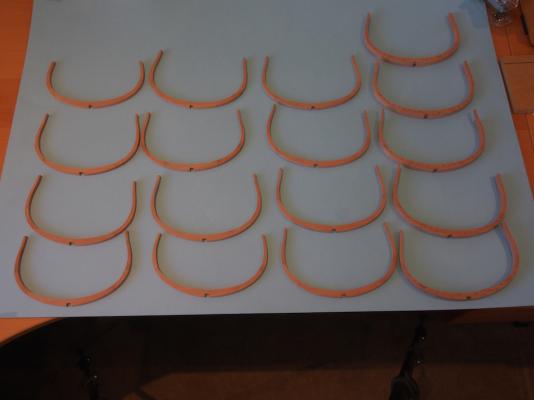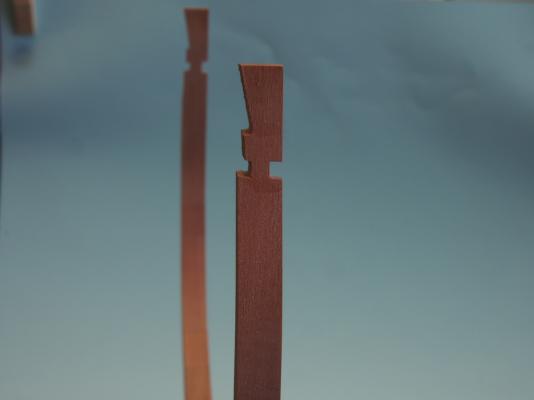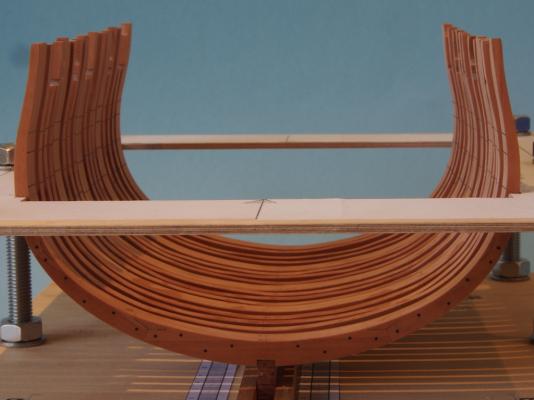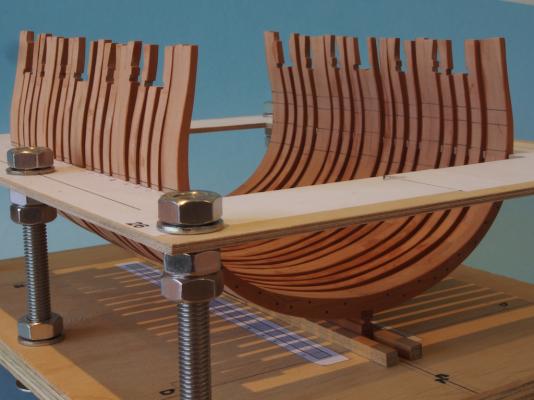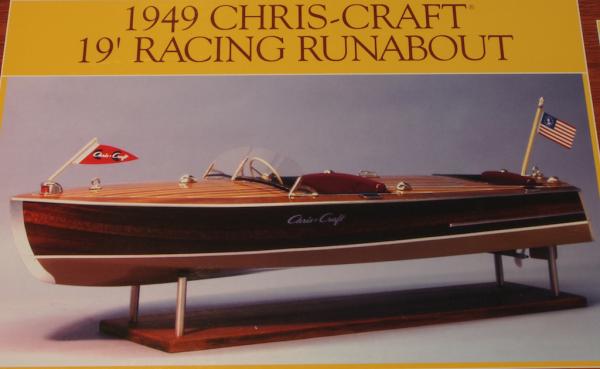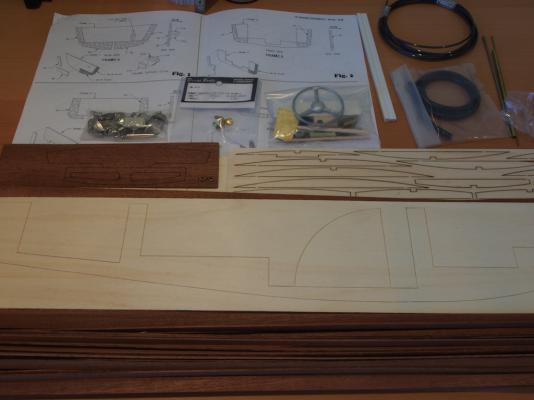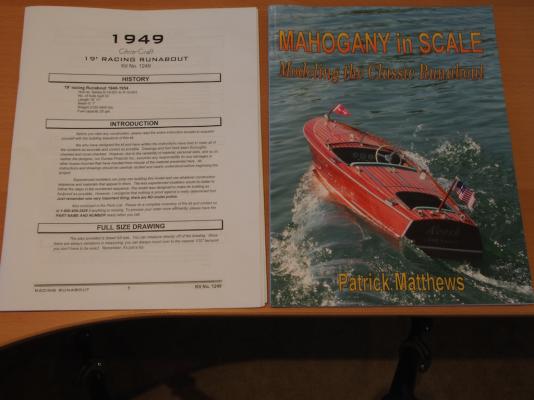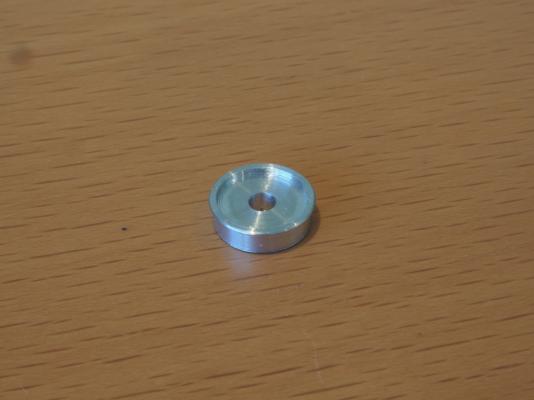-
Posts
4,880 -
Joined
-
Last visited
Content Type
Profiles
Forums
Gallery
Events
Everything posted by gjdale
-
Gotta agree with the others Augie - very nice work!
- 2,191 replies
-
- confederacy
- Model Shipways
-
(and 1 more)
Tagged with:
-
Great work on the sails again Jesse - they look fabulous!
- 607 replies
-
- scottish maid
- artesania latina
-
(and 1 more)
Tagged with:
-
Great job on the wheel Marc, it looks fantastic!
- 525 replies
-
- cutty sark
- mantua
-
(and 2 more)
Tagged with:
-
Up to your usual high standard I see Bob.
- 1,477 replies
-
- essex
- model shipways
-
(and 1 more)
Tagged with:
-
Great work Mobbsie - you're really powering ahead now. It's all looking "shipshape".
- 255 replies
-
- granado
- bomb ketch
-
(and 2 more)
Tagged with:
-
Thank you very much Brian, Mobbsie, Bob, Rusty, Jerry and Sy, and of course, all of the likes. I am constantly in awe of the generosity of spirit of the modelling community and would like to pay tribute to two special gentlemen. Firstly, our very own Rusty, who PM'd me recently to offer to send me his copy of the Dumas DVD on finishing techniques. An offer that I might add, I accepted with grateful alacrity - it might just get me through the fibreglassing stage! Thanks ever so much Rusty! The second acknowledgement I'd like to make is to someone who, to my knowledge, is not even a member of this Forum. That gentleman's name is Mr Ken Foran. Ken is an expert modeller and is the designer of the Model Expo Allerton Steam Pumper kit. A little while ago, I bought this kit when ME had one of their 40% off sales (I know, I'm weak, I couldn't help myself). When I sent a query to ME Customer Service regarding something in the instructions, they kindly put me in touch with the kit designer, Ken. I have since had an ongoing email dialogue with Ken, who it turns out has also written a book "Model Building with Brass". This book is an absolute beauty! Not only does it provide lots of tips and techniques that are applicable to model ship building, but it is packed with beautiful colour photographs of Ken's work - a great coffee table book as well as a must-have reference book. Anyway, it was reading his book that prompted me to have a go at the instrument gauges for this build and Ken has patiently answered my (several) email questions about how to go about this, including tips on cutting techniques and achieving a highly polished effect. Thanks Ken! Right - on with the show..... Construction: Gauges Having successfully competed the “proof of concept” for the gauges, I went back and turned up the final versions, adding a few improvements as I went. In particular, I made the “undercut” behind the gauge more substantial to help with mounting, and I put a bevel on both the inside and outside of the outer ring. Before parting off from the lathe, I used a succession of finer grit sanding pads, and finally some metal polish to achieve an almost “chrome” finish. In the pics below, I've included the original "proof of concept" test to show the difference in finish achievable: Browsing the RC Forum, I came across a set of gauge faces that someone had drawn up and posted, so I “borrowed” these rather than re-inventing the wheel. After a little trial and error to get the sizing right, I printed them up and have just temporarily placed them in the gauge faces for a “test fit”. At the moment they are just printed on plain paper. In the final version I may print them on photographic paper. Further testing to be done yet. Given that the larger of the dials is just 10mm in diameter, I think these look acceptable. I have a plan for the gauge "glass" - coming to a forum near you soon........................
- 339 replies
-
- dumas
- Chris-Craft
-
(and 3 more)
Tagged with:
-
Yep, well done on the bulkhead Sjors. Looking forward to seeing the rest of the fit out now.
- 1,616 replies
-
- caldercraft
- agamemnon
-
(and 1 more)
Tagged with:
-
Flying Dutchman brand are also very good.
-
They look pretty good from this distance Bob!
- 1,477 replies
-
- essex
- model shipways
-
(and 1 more)
Tagged with:
-
Thanks David, Mobbsie, Dave, Canute, Rusty and Jeff, and all the "likes". As everyone seems to agree that things look good to proceed, I've glued the first frame in place. This will be a fairly slow process as I will be installing some filler/spacer blocks as I go and waiting for each frame to set properly before moving on to the next. I'll post more pics when we get there. Jeff - it's nice to have you looking in on all of us. Your drawings are a joy to work with.
- 456 replies
-
- finished
- bomb ketch
-
(and 2 more)
Tagged with:
-
Great work Augie. She's looking more beautiful every day!
- 2,191 replies
-
- confederacy
- Model Shipways
-
(and 1 more)
Tagged with:
-
Thanks Augie, Jack, Mobbsie, David (Scratch) and Mike, and all of the "likes". Well, the frames are finally complete. Here they are prior to having the WOP finish applied: All of the gunport and sweep port sills have been pre-cut, again thanks to Mobbsie for showing me the method for this: And here are all the frames test-fit in the jig: All appears to be in order. I marked all the reference lines from the frame drawings on the individual frames, and they seem to be fairly well aligned and in roughly the right place, so I think I'm good to glue up. If anyone spots any glaring errors, please let me know before I break out the glue!!!
- 456 replies
-
- finished
- bomb ketch
-
(and 2 more)
Tagged with:
-
Introduction I bought this kit about two years ago, having been enamoured by the excellent build log of Rusty on MSW 1. Sadly, that build log disappeared with the “great crash”, although Rusty did re-instate the photo sequence from his build. This kit represents a couple of “firsts” for me. First up, I’ve opted to go with making this a working radio controlled model – something I’ve never done before, but the Admiral thought it might be a bit of fun and so in a way this is “her” boat. We have a pond/lake nearby and some grand kids that might also enjoy taking her for a spin (if they can wrest the controls from the Admiral, that is!) Secondly, the building of this boat calls for the use of fibreglass – something else I have never done before. What's in the box? The kit contents are interesting and appear to be generally high quality. There is a mixture of die cut and laser cut parts, Mahogany strip wood, cast metal fittings (with what appears to be nickel plating), a type of plastic board (which forms the hull below the waterline), some aluminium strip (for the trim), and some styrene strips (that form the “caulking” for the deck planks). The kit also contains all of the running gear required to make the boat operational, minus the motor, battery and RC units. These I bought separately at the time that I bought the kit. The propeller supplied is a two-bladed plastic one, so straight up I opted to purchase a replacement three-bladed brass one (you can just see this in the centre of the photo below). A set of decals, a full size plan sheet, a collection of building diagrams and what appears to be a fairly comprehensive instruction manual complete the contents. I had also come across a book titled “Mahogany in Scale” by Patrick Matthews, which is meant as a generic guide for modelling this style of boat, but uses this exact kit as the example throughout. Having read it from cover to cover (twice), it will be a great reference throughout the build. Construction - First Steps I also found a number of build logs of this kit on an RC forum (including one by Pat Matthews) and have already come across some interesting ideas for modification. A common complaint among other builders has been the use of a decal strip for the instrument panel. I have already decided that I will replace this by making my own instrument gauges. So oddly enough, having cut out a build board to commence the project, I decided to start the build by doing a “proof of concept” for the instrument gauges. It took a little trial and error with the lathe, but here is a sample of what they might look like. I forgot to add a scale reference, but this is one of two smaller gauges that will be about 12mm external diameter. I have bored out an inner section to a 10mm diameter, into which a gauge face will be glued, and I have cut a shoulder and bezel to allow it to be mounted through the dash board. The one larger gauge will have a 16mm external diameter with 13mm inner section. I have found a few pictures of appropriate gauge faces on the web, and will probably draw my own in CAD based on these. Of course, my mate Mobbsie is now trying to convince me to add LED lighting to these……………..
- 339 replies
-
- dumas
- Chris-Craft
-
(and 3 more)
Tagged with:
-
Likewise Jesse, hope you're feeling better soon and able to move on with this - the finish line looms ever closer!
- 607 replies
-
- scottish maid
- artesania latina
-
(and 1 more)
Tagged with:
-
I'm stickin' with WOW!!! and OMG!!! Just beautiful Ed. I too am intrigued by this sculpting epoxy......
- 3,618 replies
-
- young america
- clipper
-
(and 1 more)
Tagged with:
-
Hi Bill, Welcome to MSW and thanks for your comments on my Victory build. This forum is a great resource for finding help and advice and will quickly become the most used tool in your tool box. The best way to get that advice is start your own build log when you're ready - you'll find many others will then follow along and you can ask questions as you go. You can post specific questions within your own (or others) logs, but if you want more general advice, posting a separate thread is likely to get more replies. If you haven't already done so, do a search for Victory builds as you will find many here of high standards to help you out. I particularly recommend reading through the log by Gil Middleton - it is probably the "Gold Standard" for kit builds of this ship, although it is the Caldercraft version rather than the Mamoli one. If you really want to see an impressive build, check out the scratch built Victory by EdT. To answer your question on paint colours, the main ones you'll need are yellow ochre and black. I did most of my painting long before I found MSW and my choices today would probably be different. However, I used Humbrol No.7 for the Yellow Ochre on mine, although there are many other brands available. You might like to have a look at the "Admiralty" paints on the Model Expo website. I've heard some good things about these paints. Finally, I recommend you make an introductory post in the "New to the Forum" section, to introduce yourself properly. You'll find a very warm welcome from around the globe, and if you mention your Victory build, I'm sure you'll get plenty of responses from the many other Victory builders here.
-
Very neat Bob. Stay on that bicycle and keep pedalling my friend!
- 1,477 replies
-
- essex
- model shipways
-
(and 1 more)
Tagged with:
-
Boyd, It really is easy. I knew absolutey nothing about bandsaws but was able to understand and apply this easily. I made myself a set of written step by step instructions from the video so that I could work through them without constantly replaying the video. After watching the video (several times) I found that I actually understood what I was doing when I went to apply it in practice. I was put onto this video by the guys on the woodwork forum who all raved about how good it was.
-
If you want to learn how to set up your bandsaw properly, take a look at this you tube clip of Alex Snodgrass: I watched this, took notes, then went and applied it to my bandsaw (I'm a complete bandsaw neophyte too), and it worked a treat. Very simple and easy to follow. As for ripping planks - I would think you would need a re-saw blade for this. From what I've read, this is what the serious woodworkers use for cutting veneers on the bandsaw. That said, I agree with other advice that a table saw is a better choice for this task.
-
Great work on the frieze Toni - and a neat solution to your dilemma.
- 1,449 replies
About us
Modelshipworld - Advancing Ship Modeling through Research
SSL Secured
Your security is important for us so this Website is SSL-Secured
NRG Mailing Address
Nautical Research Guild
237 South Lincoln Street
Westmont IL, 60559-1917
Model Ship World ® and the MSW logo are Registered Trademarks, and belong to the Nautical Research Guild (United States Patent and Trademark Office: No. 6,929,264 & No. 6,929,274, registered Dec. 20, 2022)
Helpful Links
About the NRG
If you enjoy building ship models that are historically accurate as well as beautiful, then The Nautical Research Guild (NRG) is just right for you.
The Guild is a non-profit educational organization whose mission is to “Advance Ship Modeling Through Research”. We provide support to our members in their efforts to raise the quality of their model ships.
The Nautical Research Guild has published our world-renowned quarterly magazine, The Nautical Research Journal, since 1955. The pages of the Journal are full of articles by accomplished ship modelers who show you how they create those exquisite details on their models, and by maritime historians who show you the correct details to build. The Journal is available in both print and digital editions. Go to the NRG web site (www.thenrg.org) to download a complimentary digital copy of the Journal. The NRG also publishes plan sets, books and compilations of back issues of the Journal and the former Ships in Scale and Model Ship Builder magazines.


